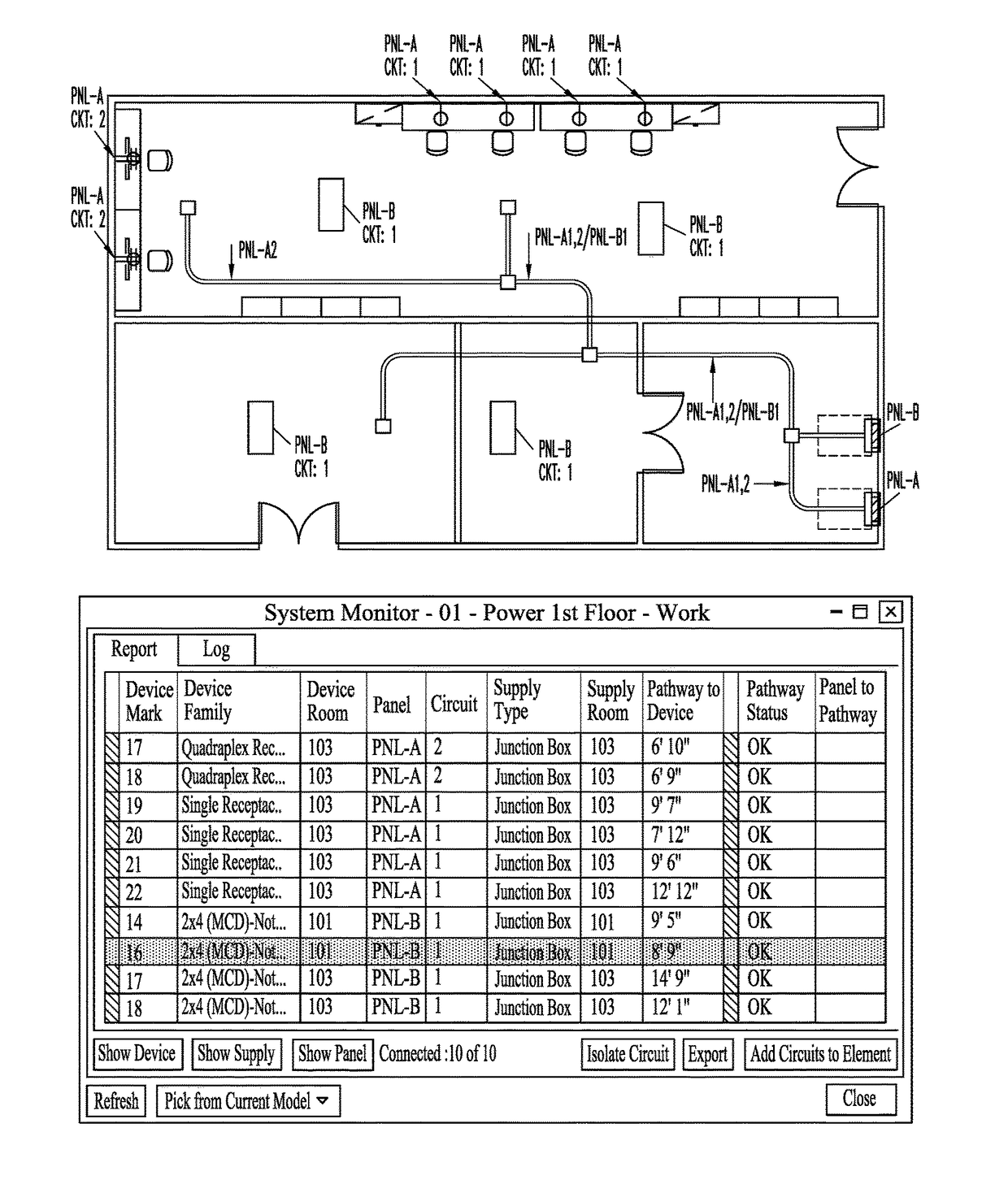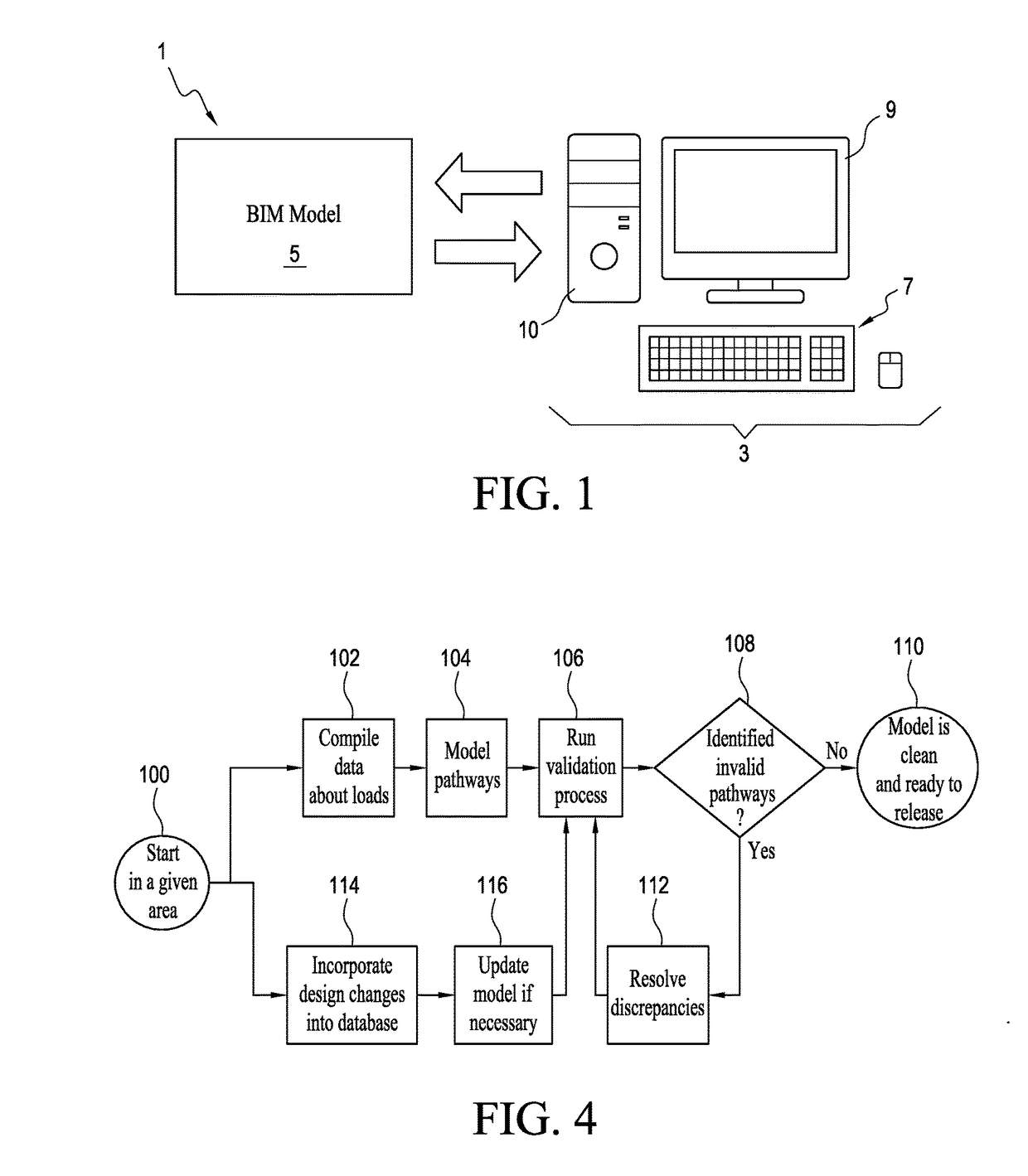System and method for testing the validity of bim-designed electrical wiring pathways
- Summary
- Abstract
- Description
- Claims
- Application Information
AI Technical Summary
Benefits of technology
Problems solved by technology
Method used
Image
Examples
Embodiment Construction
[0027]With reference to FIG. 1, the testing system 1 generally comprises a digital processor 3 that is electrically or optically connected to or otherwise in communication with a BIM modeling tool 5. The processor 3 includes a user interface 7 in the form of a keyboard and mouse combination, a display screen 9, and a processing unit 10 which may be any one of a number of commercially-available computer processors. In the preferred embodiment, the BIM modeling tool is Autodesk® Revit, although any one of a number of commercially available BIM modeling tools may form part of the system 1 of the invention.
[0028]In contrast to prior art BIM tools, the system 1 automatically and simultaneously displays a real-time report on the display screen 9 clearly indicating the validity or invalidity of the resulting pathway as soon as a system user assigns a circuit to a pathway. The manner in which the system 1 accomplishes this task is summarized in FIGS. 2A and 2B which comprise a flowchart 20 ...
PUM
 Login to View More
Login to View More Abstract
Description
Claims
Application Information
 Login to View More
Login to View More - R&D
- Intellectual Property
- Life Sciences
- Materials
- Tech Scout
- Unparalleled Data Quality
- Higher Quality Content
- 60% Fewer Hallucinations
Browse by: Latest US Patents, China's latest patents, Technical Efficacy Thesaurus, Application Domain, Technology Topic, Popular Technical Reports.
© 2025 PatSnap. All rights reserved.Legal|Privacy policy|Modern Slavery Act Transparency Statement|Sitemap|About US| Contact US: help@patsnap.com



